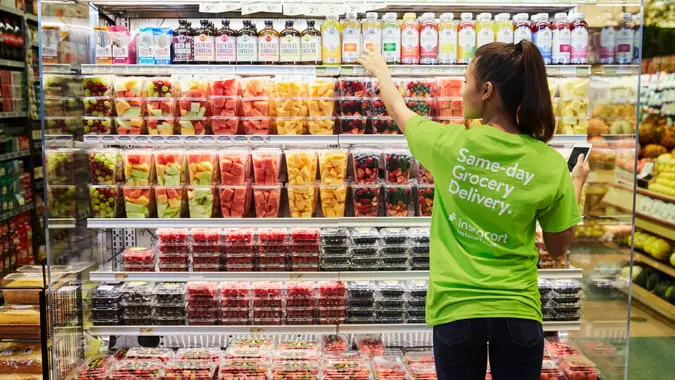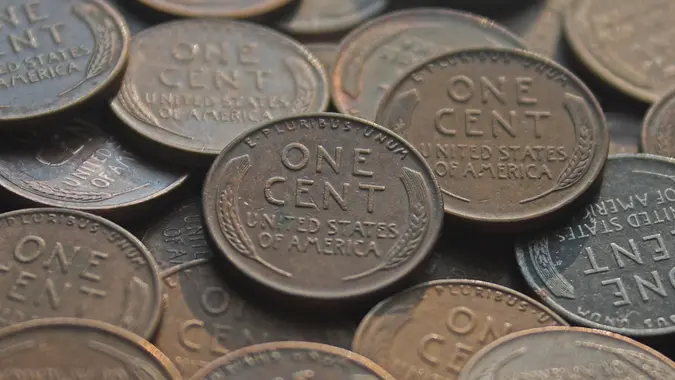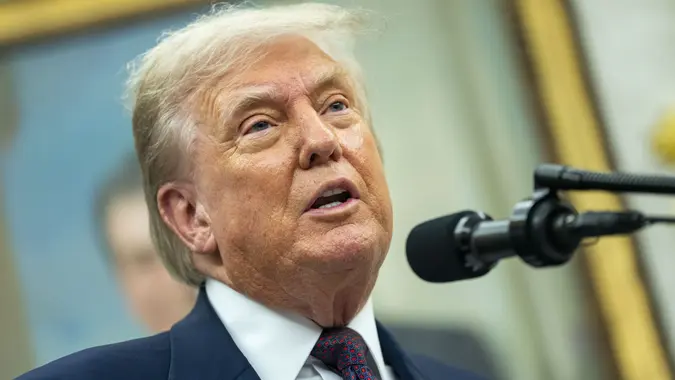These 6 States Are Stepping In To Help SNAP Recipients — Is Yours One of Them?

Commitment to Our Readers
GOBankingRates' editorial team is committed to bringing you unbiased reviews and information. We use data-driven methodologies to evaluate financial products and services - our reviews and ratings are not influenced by advertisers. You can read more about our editorial guidelines and our products and services review methodology.

20 Years
Helping You Live Richer

Reviewed
by Experts

Trusted by
Millions of Readers
Federal SNAP benefits face immediate disruption as the government shutdown threatens November payments for approximately 22 million U.S. households. The USDA announced that SNAP benefits will not be paid if the shutdown continues, leaving millions of Americans uncertain about food assistance.
This shutdown crisis is separate from the $186 billion in SNAP cuts through 2034 enacted in President Donald Trump’s tax bill signed in July, which will impose work requirements, shift costs to states and restrict eligibility starting in 2027. The current emergency involves whether benefits will be paid at all this coming month.
Six states are taking emergency action to protect residents from losing benefits during the shutdown.
California: $80 Million Plus National Guard Deployment
California is fast-tracking up to $80 million in state funds to support food banks and offset delayed federal SNAP benefits. Gov. Gavin Newsom deployed the California National Guard and California Volunteers to assist with food distribution efforts.
The state also filed a lawsuit against the federal administration over withholding SNAP benefits. California SNAP recipients should see increased support through food banks even if federal assistance remains delayed.
New York: $30 Million Emergency Funding
New York announced $30 million in emergency food assistance funds representing over 16 million meals in anticipation of federal benefit disruption.
Gov. Kathy Hochul’s emergency funding provides state-level backup for SNAP recipients facing federal benefit interruptions.
Louisiana: $150 Million for 800,000 Recipients
Louisiana lawmakers authorized $150 million in state funding, allowing most of the state’s approximately 800,000 SNAP recipients to receive their full monthly benefit amount despite federal funding issues.
Louisiana represents one of the most aggressive state responses, ensuring benefit continuity through direct state funding rather than just food bank support.
New Mexico: $30 Million via EBT Cards
New Mexico committed $30 million in emergency food assistance delivered via EBT cards to backfill SNAP benefits, in addition to previous funding for food banks.
The state is stepping in with direct funds to reduce disruption for SNAP households rather than relying solely on food bank distribution.
Virginia: State-Funded Benefit Continuation
Virginia’s governor announced SNAP benefits will continue via state funding despite the federal shortfall. The state is actively ensuring benefit continuity at the state level for all recipients.
Minnesota: $4 Million to Food Banks
Minnesota’s governor announced use of contingency funds adding $4 million to food banks in anticipation of SNAP disruptions. While smaller in scale than other states, Minnesota acknowledged the support “will not make up and back-fill everything.”
Important Limitations
These state actions don’t guarantee full replacement of federal benefits. Many states describe their funds as bridges, not complete backfills of federal assistance.
The USDA indicated that states covering benefits with their own funds may not be reimbursed by the federal government. This creates financial pressure on state budgets that may limit how long supplemental funding can continue.
These are emergency responses to the immediate Nov. 1 deadline. Support may be temporary unless federal funding is restored.
What SNAP Recipients Should Do
Check your state’s human services or social services website for announcements about supplemented funding or emergency food bank support.
Verify whether your normal SNAP benefit amount will be paid in full, partially substituted or replaced by food bank access. Many states are offering food bank support rather than full cash benefit replacement.
Food banks and emergency distribution networks may become more critical as states boost support to nonprofits rather than direct benefit payments.
Monitor federal developments. If the shutdown ends and federal funding restores, benefits should return to normal. If not, states may continue or expand emergency efforts.
 Written by
Written by  Edited by
Edited by 
























